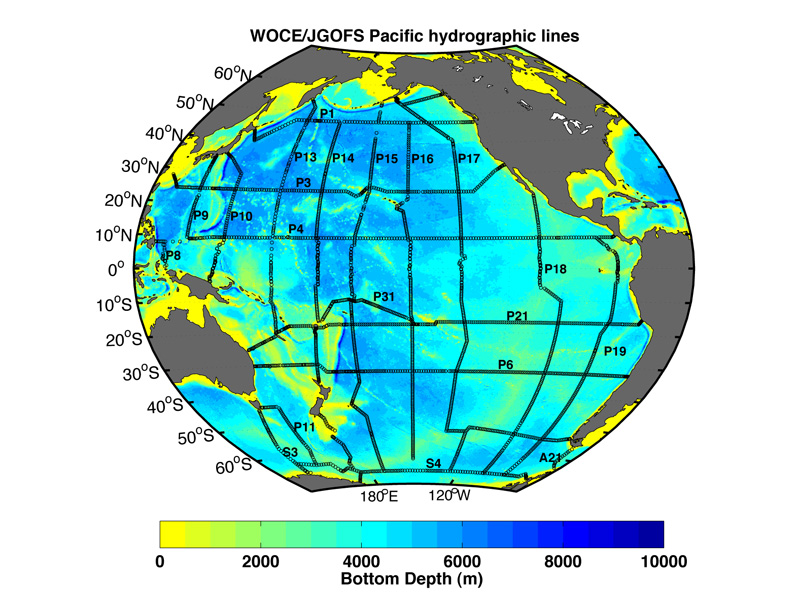Pacific Carbon
Collaborative Research: Alison M. Macdonald (WHOI) and Sabine Mecking (APL-UW)
To predict the progression of CO2 increases in the atmosphere and the evolution of anthropogenic climate change a detailed, quantitative understanding of the interaction between ocean circulation and oceanic carbon sources and sinks is required. Focusing on the Pacific Ocean, we seek to understand how carbon that enters at the sea surface as well as from the south is transported zonally, meridionally and vertically, where it mixes and where it is stored so that we may better predict how changes in ocean circulation may affect oceanic sources and sinks of anthropogenic carbon (CANT) in the basin (GCC Theme 1). We hypothesize that abyssal flow into the Pacific Ocean represents a significant pathway for anthropogenic carbon entering the basin from the south to circulate into the deep North Pacific, while the shallow cell which crosses from the southern to the northern hemisphere supports a pathway for recently ventilated, and therefore CANT-rich waters into the intermediate layers of the northern basin.

Using a previously completed observationally based synthesis of Pacific circulation, this investigation seeks to quantitatively determine: the zonal, meridional and vertical patterns and magnitudes of total inorganic carbon and CANT transport in the Pacific; how CANT transports differ depending upon the derivation of the CANT estimates; the pattern of CO2 uptake and outgassing that is consistent with the observed circulation; whether the observed carbon circulation is consistent with pCO2 based air-sea flux estimates of uptake and outgassing; and how the observed patterns of transport explain Pacific carbon inventories during the 1990s, as well as more recent estimates. The answers to these questions will provide insight into how changes in Pacific Ocean circulation such as a slow down in the deep overturn would affect source/sink and storage/inventory patterns of CANT in the basin.
